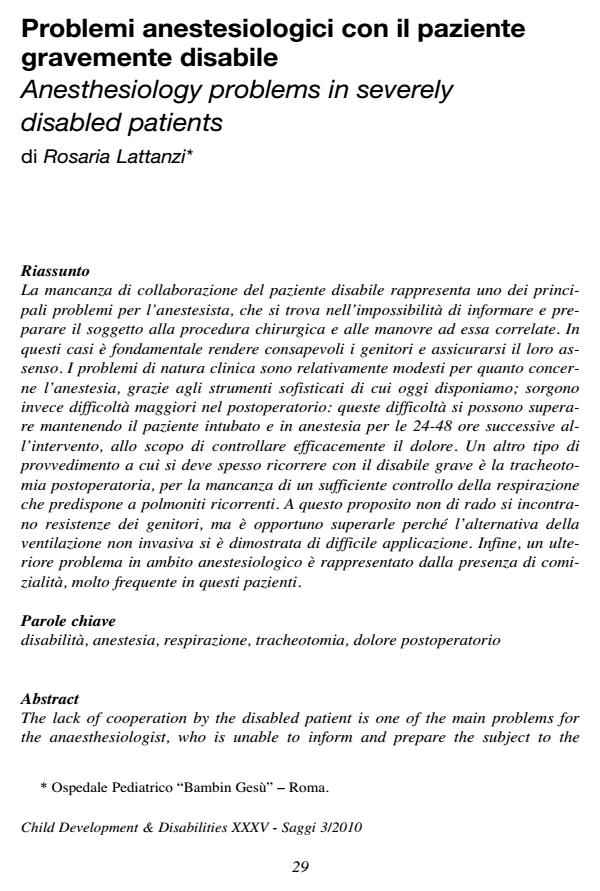Anesthesiology problems in severely
Journal title CHILD DEVELOPMENT & DISABILITIES - SAGGI
Author/s Rosaria Lattanzi
Publishing Year 2012 Issue 2010/3
Language Italian Pages 4 P. 29-32 File size 50 KB
DOI 10.3280/CDD2010-003005
DOI is like a bar code for intellectual property: to have more infomation
click here
Below, you can see the article first page
If you want to buy this article in PDF format, you can do it, following the instructions to buy download credits

FrancoAngeli is member of Publishers International Linking Association, Inc (PILA), a not-for-profit association which run the CrossRef service enabling links to and from online scholarly content.
The lack of cooperation by the disabled patient is one of the main problems for the anaesthesiologist, who is unable to inform and prepare the subject to the surgery. In these cases it is necessary to make the parents aware of the situation and to have their consent. Clinical issues are relatively minor as far as the anaesthesia is concerned, thanks to the modern sophisticated instruments; while major problems arise in the postoperative period. However, it is possible to ride these troubles out by keeping the patient ducted i and under anesthetic for 24-48 hours after the surgery, in order to control the pain properly. Another type of intervention is the tracheostomy that is frequent after the surgery in the severe disabled, due to his lack of breath control, a cause of recurrent pneumonia. Parents often are against this solution, but it would be advisable to overcome their opposition, because noninvasive ventilation has shown to be difficult to implement. A further problem for the anesthesia of disabled patients is the presence of seizures, quite frequent in this type of patients.
Keywords: Disabilities, anesthesia, breathing, tracheostomy, post operative pain
Rosaria Lattanzi, Problemi anestesiologici con il paziente gravemente disabile in "CHILD DEVELOPMENT & DISABILITIES - SAGGI" 3/2010, pp 29-32, DOI: 10.3280/CDD2010-003005